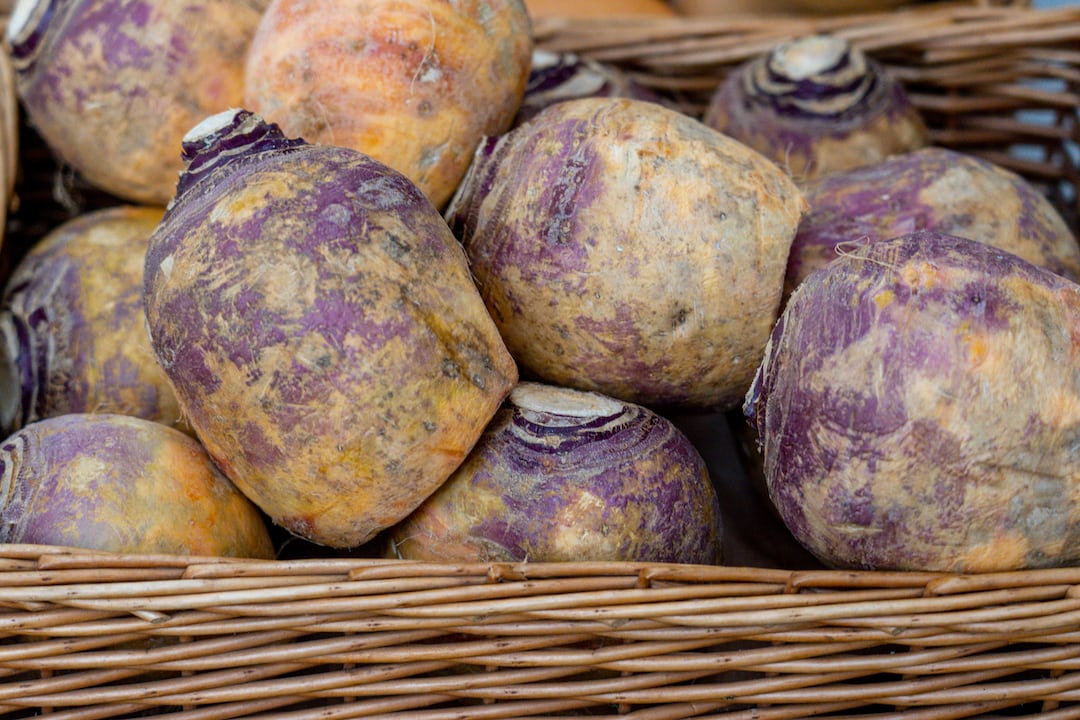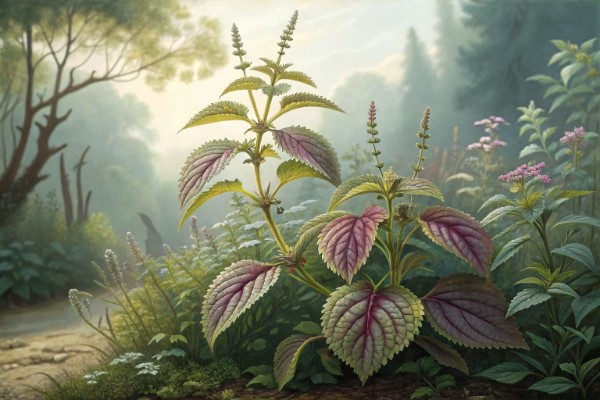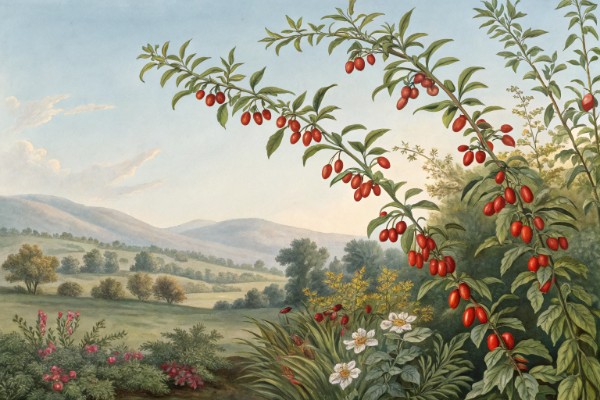Growing Rutabaga for a Flavorful and Abundant Harvest

Growing Rutabaga
Growing rutabaga rewards patience, richly so. Plant seeds directly into cool, well-drained soil, give them full sunlight, and you'll harvest mild, nutty-flavored rutabagas within 90 days. Water consistently, weed aggressively, and thin seedlings early—master these basics, and you'll transform this underrated root vegetable into a prized ingredient for soups, roasts, and savory dishes. Curious about timing, troubleshooting, or tasty recipes? Read on to coax perfection from every bulb.
Growing Rutabaga: site, season, and soil
I grow rutabaga for that sweet, earthy snap that shows up after a kiss of frost, and it never disappoints. This brassica prefers steady cool weather, a friable bed, and patience.
Plan 90 to 110 days from sowing to harvest, so backfill your calendar from first fall frost. In mild-winter zones, sow late summer and lift roots midwinter for peak flavor.
Target soil pH 6.5 to 7.2 to keep nutrients available and to keep clubroot in check. If your pH sits low, lime early since it moves slowly through the profile.
Rutabaga wants full sun, consistent moisture, and a loose-ish loam that drains yet holds water. I fork the bed deeply, then rake a fine tilth so seed-to-soil contact is spot on.
Climate cues and temperature windows
Ideal growing temps hover around 50 to 70 F, 10 to 21 C, which keeps texture tender and sugars building. Heat above 80 F, 27 C, invites pithy cores and off flavors.
Germination ticks along from 45 to 85 F, 7 to 29 C, with the sweet spot near 60 to 75 F, 16 to 24 C. Cool soil slows emergence, so use a light cover to warm the bed if needed.
Sowing and spacing that set you up for size and sweetness
Direct sow 0.5 inch deep, 1.3 cm, into moist soil and keep the top inch evenly damp until emergence. I seed a bit heavy, then thin with a coffee in hand a week later.
Final spacing matters for bulb size and flavor. Thin to 8 to 10 inches, 20 to 25 cm, in-row with rows 18 to 24 inches, 46 to 61 cm, which breathes and reduces disease pressure.
Transplanting is possible from 30-cell plugs, but timing is tight and root disturbance can fork bulbs. For most gardens, direct seeding stays simpler and cleaner.
Mulch after thinning to lock in moisture and to blunt soil splash. A floating row cover from day one blocks flea beetles and root maggot flies without a chemistry set.
Watering for dense, juicy roots
Give about 1 inch, 25 mm, of water weekly, more in sandy soils with wind. Irregular moisture can split bulbs and push starchy, woody textures.
Variety shortlist for flavor, color, and reliability
- ‘Helenor’: 90 days, buttery flesh, tidy shoulders, steady performer in my test beds across two soils.
- ‘Laurentian’: 100 days, classic purple top with sweet golden interior, great in storage through late winter.
- ‘American Purple Top’: 95 to 100 days, dependable, slightly spicier when young, mellows after frost.
- ‘Joan’: 95 days, smooth skin and uniform bulbs that make markets easy, handles light pressure from flea beetles.
- ‘Brora’: 120 days, slower but deeply flavored, best for deep winter storage if your fall stays cool.
When buying seed, check days to maturity, shoulder color, and storage notes on the packet. Pelleted seed helps with precision if you run a hand seeder.
Feeding strategy without overdoing nitrogen
I pre-plant with compost and a balanced starter fertilizer in the 5-10-10 range, then side-dress potassium midseason. Too much nitrogen grows top-heavy plants and splits roots.
Rutabaga likes boron in the right dose to avoid hollow, browning centers called brown heart. Use a soil test, then apply boron precisely since excess can burn plants.
If feeding organically, fish hydrolysate early, then sulfate of potash, 0-0-50, at bulbing. A light foliar feed at 4 to 6 weeks can help if leaves pale.
Pests, diseases, and clean cultural habits
Flea beetles chew lace into cotyledons fast, so I cover beds at sowing and only remove after plants toughen. Cabbage root maggot can gut a stand in spring, which is why I skip early spring sowings here.
Scout aphids on the undersides of leaves and wash them off before populations balloon. Swede midge can twist growing points in some regions, so rotate and avoid back-to-back brassicas.
Clubroot thrives in wet, acidic soil and lingers for years. Raise pH, improve drainage, and widen rotations to 3 or 4 years away from brassicas.
“Light frost brings out a sweeter, richer flavor in rutabaga.” Multiple North American university extensions
Weed and canopy management
Flame weed pre-emergence, then hoe shallowly once plants anchor. A weed-free first month sets yield potential better than any miracle product.
Harvest timing, yield, and storage that keep quality high
I pull roots at 3 to 5 inches across, 7.5 to 12.5 cm, for dense texture and clean flavor. Bigger bulbs can be fine, but they lean woody if heat or drought hit.
Expect 2 to 4 pounds per plant, 0.9 to 1.8 kg, with good spacing and moisture. In-row uniformity improves if thinning happens early.
Clip tops to 1 inch, 2.5 cm, brush off soil, and chill fast. Store at 32 to 34 F, 0 to 1 C, with 95 percent humidity for 3 to 5 months.
I keep a crate in the coldest corner of the root cellar with a damp burlap cover. Roots hold firm well into spring if you beat back dehydration.
Flavor notes and kitchen payoffs
Frost nudges starch into sugars, and you can taste it in a simple roast with thyme and garlic. I shave raw rutabaga into slaws for a nutty crunch that brightens rich winter meals.
Leaves are edible and mild when young. I sauté thinnings like tender kale with chili and lemon for a cook’s snack.
Troubleshooting Growing Rutabaga
- Woody or bitter roots: Heat stress or drought; sow later, mulch, and water evenly.
- Forked roots: Compaction or fresh manure; loosen soil and keep nitrogen steady.
- Hollow centers: Low boron or erratic growth; test soil and correct with labeled boron products.
- Green shoulders: Sun-exposed tops; hill lightly or mulch to cover crowns.
- Stunted plants: Clubroot or maggots; raise pH, rotate, and use physical barriers.
Comparisons and smart swaps
Turnips mature faster, 35 to 60 days, with a sharper bite and less storage life. Kohlrabi yields crisp bulbs above ground and laughs at shallow soils but lacks the deep sweetness of a frosted rutabaga.
For mashed dishes, I choose rutabaga over potatoes in late fall for a lower-starch, sweeter profile. For quick stir-fries, baby turnips win on tenderness and speed.
Shopping list for Growing Rutabaga
- Seeds: ‘Helenor’ for speed, ‘Laurentian’ for storage, plus a late ‘Brora’ if winters run long.
- Row cover or insect net: Lightweight cover to keep beetles and maggot flies out from day one.
- Soil test kit: Check pH and boron before you guess.
- Fertilizers: Balanced 5-10-10, sulfate of potash, and a labeled boron source if tests flag a deficiency.
- Tools: Stirrup hoe, collinear hoe, and a hand seeder for even stands.
Data points and trusted voices
Rutabaga, Brassica napus var. napobrassica, typically matures in 90 to 110 days per multiple land-grant university guides. Optimal growth sits near 50 to 70 F, 10 to 21 C, with best flavor after light frost.
“Maintaining soil pH at or above 7.2 helps reduce clubroot severity.” Royal Horticultural Society
USDA FoodData Central lists rutabaga as low calorie with meaningful vitamin C and fiber, which tracks with its bright, sweet bite. University extensions from Wisconsin, Minnesota, and Oregon echo the same cultivation playbook: cool temps, steady moisture, rotation, and early row cover.
I have run side-by-side beds across two pH ranges, and the high-pH bed grew cleaner, denser bulbs with fewer defects. That single change paid for every lime bag and then some.
Cheatsheet: Rutabaga Growing for Maximum Flavor
🌱 Site & Soil Prep
- Full sun: 6+ hrs/day
- pH: 6.0–7.0 optimal
- Enrich with compost
- Loose, well-drained earth—avoid clods
- Pre-plant: Remove rocks
🗓️ Sowing Timeline
- Start: 90–100 days before 1st autumn frost
- Zones 3–7: Summer sowing (late June–July)
- Zones 8–10: Fall/Winter crop
🌧️ Water & Care
- Keep soil moist, not soggy
- Mulch for even moisture, weed suppression
- Thin seedlings to 6 in / 15 cm apart
- Feed midseason with compost tea
🌡️ Growing Conditions
- Germinate: 50–85°F / 10–29°C
- Grow best: 60–65°F / 15–18°C
- Frost sweetens flavor
🌾 Tools and Products You’ll Need
- Hoe or hand trowel
- Watering can or soaker hose
- pH test kit (optional)
- Compost
- Row covers (against flea beetles)
- Mulch (straw/leaves)
🦠 Diseases & Pests
- Flea beetles: Use row covers
- Root maggots: Rotate crops yearly
- Clubroot: Keep pH above 6.5
⏳ Harvest
- Ready in 90–120 days
- Roots: 3–5 in / 7–12 cm diameter (best flavor/texture)
- Sweeter after light frost
- Lift gently with fork to prevent splitting
- Up to 10 lb / 4.5 kg per 10 ft / 3 m row
🥗 Storage & Use
- Remove tops, store roots cold (32–40°F / 0–4°C) & moist
- Lasts 3–4 months in root cellar/crisper
- High in vitamin C, complex carbs, fiber
🔪 Steps to Grow a Rutabaga Crop
- Amend soil with compost; test for pH 6.0–7.0.
- Sow seed 1/2 in / 1.25 cm deep; space 2 in / 5 cm apart.
- Thin to 6 in / 15 cm after sprouting.
- Keep soil moist; mulch to conserve water.
- Protect from pests with covers or rotation.
- Harvest roots when 3–5 in / 7–12 cm diameter, after frost if possible.
- Trim tops; store roots cool and moist for winter eating.
Frequently Asked Questions about Growing Rutabaga
What soil conditions promote optimal rutabaga growth?
Rutabagas thrive in slightly acidic to neutral soil with a pH range of 6.0 to 7.0. Prepare a rich, loose soil mixture that drains well. Work in generous amounts of organic compost or aged manure to support vigorous root development.
When is the ideal planting window for rutabagas?
Plant rutabaga seeds approximately 10 to 12 weeks before your area's first expected frost date in autumn. Cooler air temperatures around 60°F to 65°F (15°C to 18°C) foster steady, healthy growth and enhance flavor.
How deep and far apart should rutabaga seeds be planted?
Sow rutabaga seeds about ½ inch (1.25 cm) deep, spacing seedlings initially at 2 inches (5 cm) apart. Once established, thin seedlings to maintain final spacing of approximately 6 to 8 inches (15 to 20 cm) apart to promote proper root enlargement.
What watering schedule supports vigorous rutabaga growth?
Maintain consistent moisture, providing approximately 1 to 1½ inches (2.5 to 3.8 cm) of water per week. Avoid waterlogging the soil as overly wet conditions may cause roots to rot or split.
Are there effective companion plants for rutabagas?
Yes, rutabagas benefit from planting alongside aromatic herbs and vegetables such as sage, onions, garlic, and marigolds, as these companions help repel harmful pests. Avoid planting rutabagas near potatoes or other Brassica family members like cabbage or broccoli, which may attract similar pests or diseases.
How can rutabagas be protected from common pests and diseases?
Use floating row covers to guard young plants against common pests like flea beetles and cabbage maggots. Rotate crops annually and manage weeds to minimize disease occurrence. Monitor regularly for signs of aphids and promptly address infestations with natural insecticidal soaps or horticultural oils.
When and how should rutabagas be harvested?
Harvest rutabagas roughly 90 to 110 days after planting, once roots reach approximately 3 to 5 inches (7.5 to 12.5 cm) in diameter. Gently lift roots with a garden fork or spade, removing excess soil. Trim tops to around ½ inch (1.25 cm) before storage.
Growing Rutabaga rewards patience and a bit of grit. Start with rich soil, steady moisture, and a dash of humility—rutabagas don’t demand much, but they pay you back in spades. Thin those seedlings, keep weeds under control, and let the roots fatten up as the weather cools. Harvest after a light frost for the sweetest flavor. Rotate them with other crops like broccoli or even experiment with companions such as lovage to keep your patch healthy. With a little observation and care, you’ll pull up hefty, rugged roots perfect for roasting, mashing, or stews. Growing Rutabaga isn’t flashy, but it’s honest work that fills both pantry and soul.



